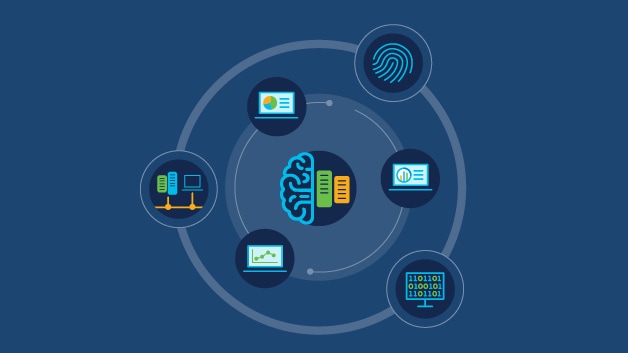Where did the term AIOps originate?
Gartner, a global research and advisory firm, was the first to coin the term AIOps. Gartner's definition of AIOps is as follows: "AIOps combines big data and machine learning to automate IT operations processes, including event correlation, anomaly detection, and causality determination."
Is AIOps a platform?
AIOps can be considered a platform, in that organizations need to align various hardware and software components—including AI and ML engines and specialized servers—as well as human expertise to implement and operate AIOps.
Many service providers offer AIOps solutions for combining big data and AI, ML, and MR capabilities. These solutions improve and automate event monitoring, service management, and more. Most providers typically refer to these solutions as AIOps platforms.
However, more than anything, AIOps is an approach to modernizing IT operations in all areas—including security operations (SecOps), network operations (NetOps), and development operations (DevOps)—by using advanced technology like AI to integrate systems and data and intelligently automate IT.
What else is required to implement AIOps?
A business can't set up AIOps without the ability to integrate its IT systems so those systems can share information and learn from each other. Systems integration requires an application programming interface (API) that is open; in other words, the product manufacturer makes the API publicly available to software developers.
Software development kits (SDKs) are also essential for setting up AIOps. Developers use these toolkits to build custom applications that can be added onto or connected with other programs.
What are some examples of AIOps?
An example of AIOps is as follows:
- A network management system (NMS) employing AI/ML technology detects a problem with a networking device, such as a switch, router, or access point on the network. The AI/ML diagnoses the problem and provides remediation steps for solving the issue.
- The NMS sends an alert to the IT Service Management (ITSM) server that a problem has been identified on the network and a service ticket should be opened to authorize the repair. A time-to-repair estimate is entered based on the remediation from the NMS.
- The ITSM automatically creates an open ticket, which authorizes the upgrade/repair of the device, specifies the time required to repair, and sets a window for completion.
- Once the issue is fixed by technical support staff—either directly or through automation—the NMS updates the ITSM that the issue is resolved and automatically closes the ticket.
The NMS, powered by AI/ML, saved time in troubleshooting and remediating a solution. Then the ticketing process was handled automatically and seamlessly between the integrated systems, so there was no need for an IT team member to manually create, open, or close a support ticket. This is a very simple example of how AI/ML and connected systems save time and create efficiency. This is the power of AIOps.
What is the state of AIOps, generally?
Most systems that take advantage of AIOps today are integrations resulting from direct collaboration between the manufacturers of those systems. The manufacturers work together to ensure their product integrations are as tight and functional as possible.
However, as more forward-looking companies introduce open APIs and SDKs with their products, manufacturers won't need to be involved as much—or at all—in AIOps integrations. Customers will be able to do their own integrations and customize them to meet their specific needs.
